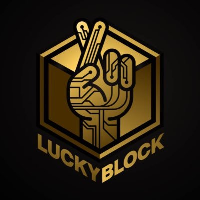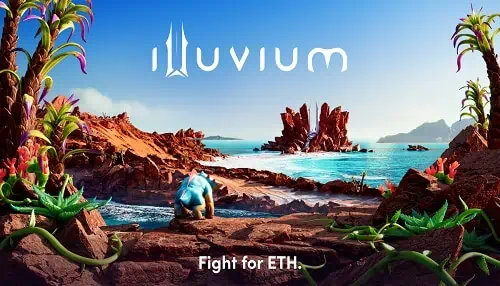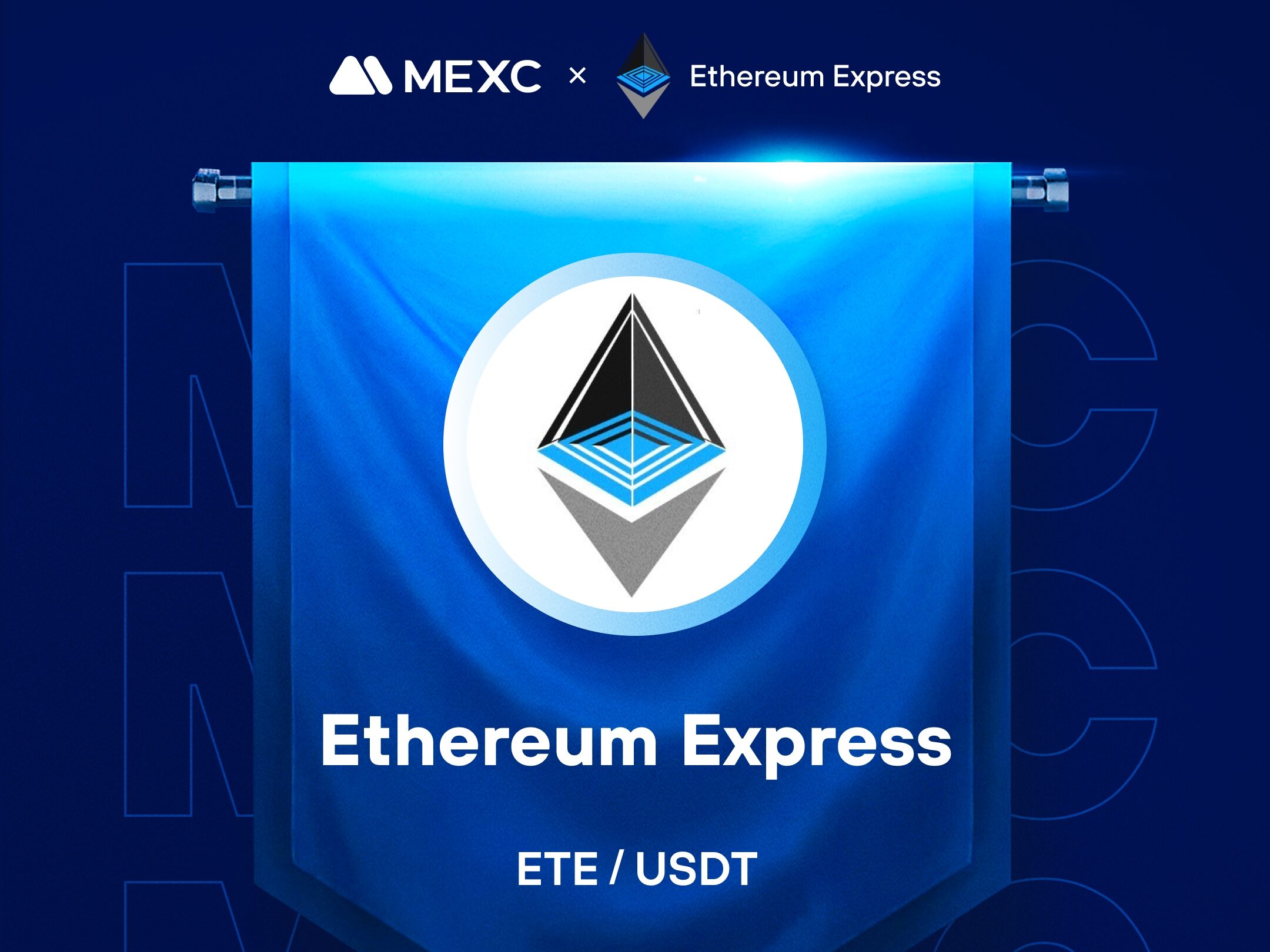
Ethereum stands as the world’s second-largest cryptocurrency by market capitalization and the foundational platform powering the decentralized web revolution.
This comprehensive guide explores everything you need to know about Ethereum (ETH), from its groundbreaking smart contract technology to its role in reshaping finance, gaming, and digital ownership.
Whether you’re a crypto beginner seeking to understand blockchain fundamentals or an experienced investor evaluating ETH’s potential, this article provides essential insights into Ethereum’s ecosystem, tokenomics, real-world applications, and future roadmap.
You’ll discover how to buy ETH, understand its key advantages over competitors, and grasp why Ethereum continues to drive innovation in decentralized finance (DeFi), non-fungible tokens (NFTs), and Web3 applications.
Key Takeaways:
- Ethereum is the world’s second-largest cryptocurrency and the leading smart contract platform powering DeFi, NFTs, and Web3 applications.
- The platform transitioned from energy-intensive Proof-of-Work to eco-friendly Proof-of-Stake in September 2022, reducing energy consumption by 99.95%.
- EIP-1559 introduced fee burning in August 2021, creating deflationary pressure on ETH supply during high network usage periods.
- ETH serves multiple functions including paying network fees, staking for rewards, and acting as collateral in DeFi protocols.
- Ethereum’s continuous development and Layer 2 scaling solutions position it to remain the dominant infrastructure for decentralized applications.
Table of Contents
What is Ethereum and How Does it Work?
Ethereum is a decentralized blockchain platform that enables developers to build and deploy smart contracts and decentralized applications (dApps). Unlike Bitcoin, which primarily functions as digital money, Ethereum serves as a programmable blockchain that can execute complex computational tasks and store data across a distributed network of computers called nodes.
At its core, Ethereum operates through the Ethereum Virtual Machine (EVM), a runtime environment that executes smart contracts written in programming languages like Solidity. When users interact with Ethereum applications, they pay transaction fees called “gas” using ETH, the platform’s native cryptocurrency. These fees compensate network validators who process transactions and maintain blockchain security through Ethereum’s Proof-of-Stake consensus mechanism.
The platform’s revolutionary approach lies in its ability to create trustless, automated agreements that execute without intermediaries. Smart contracts eliminate the need for traditional financial institutions, legal frameworks, or centralized authorities, enabling peer-to-peer value exchange and complex financial instruments to operate autonomously.
What is Ethereum and ETH? Key Differences Explained
| Aspect | Ethereum | ETH |
|---|---|---|
| Definition | Decentralized blockchain platform and ecosystem | Native cryptocurrency token of the Ethereum network |
| Primary Function | Hosts smart contracts, dApps, and decentralized services | Serves as digital currency and pays for transaction fees |
| Role | Infrastructure layer for Web3 applications | Medium of exchange and store of value |
| Use Cases | DeFi protocols, NFT marketplaces, gaming, identity systems | Trading, staking, paying gas fees, collateral |
| Creation | Launched in 2015 by Vitalik Buterin and team | Issued as rewards to validators and through various mechanisms |
| Governance | Managed through community proposals and developer consensus | Token supply influenced by network upgrades and burning mechanisms |
What Problems Does Ethereum Want to Solve?
1. Centralization and Trust Issues
Traditional financial systems rely on centralized intermediaries like banks, payment processors, and governments to facilitate transactions and maintain records. Ethereum addresses this by creating a trustless environment where smart contracts automatically execute agreements without requiring third-party validation. This eliminates single points of failure and reduces counterparty risk.
2. Limited Programmability in Blockchain
While Bitcoin pioneered digital currency, its scripting capabilities are intentionally limited. Ethereum solves this by providing a Turing-complete programming environment that enables developers to create sophisticated financial instruments, games, identity systems, and virtually any application imaginable on the blockchain.
3. High Costs and Inefficiencies
Traditional financial services often involve multiple intermediaries, each taking fees and adding processing time. Ethereum’s smart contracts eliminate intermediaries, reducing costs and settlement times from days to minutes while maintaining transparency and security.
4. Lack of Financial Inclusion
Billions of people worldwide lack access to basic financial services due to geographical, economic, or regulatory barriers. Ethereum expands financial access by enabling users with internet connectivity and basic technical knowledge to participate in DeFi protocols, earn yields, access loans, and transfer value globally without traditional banking infrastructure.

The Story Behind Ethereum: Founder and Development History
Ethereum emerged from the visionary mind of Vitalik Buterin, a Russian-Canadian programmer who recognized Bitcoin’s limitations in 2013. At just 19 years old, Buterin published the Ethereum whitepaper, proposing a blockchain platform that could support any type of application through smart contracts and a Turing-complete programming language.
The project gained momentum when Buterin partnered with co-founders including Gavin Wood, Joseph Lubin, and Charles Hoskinson. After raising funds through a successful crowdsale in 2014 that collected over 31,500 Bitcoin (worth approximately $18 million at the time), the team launched Ethereum’s mainnet on July 30, 2015.
The platform’s early years were marked by rapid innovation and significant challenges, including the infamous DAO hack in 2016 that led to a controversial hard fork. Despite setbacks, Ethereum’s developer community continued growing, establishing the foundation for today’s $200+ billion DeFi ecosystem and the broader Web3 movement.

Key Ethereum Features: Smart Contracts and Blockchain Technology
1. Smart Contracts and Decentralized Applications (DApps)
Smart contracts are self-executing programs that automatically enforce agreement terms without intermediaries. These digital contracts eliminate human error, reduce costs, and ensure trustless execution of complex multi-party agreements. Developers have built thousands of dApps on Ethereum, ranging from decentralized exchanges like Uniswap to lending protocols like Aave, demonstrating the platform’s versatility and robust infrastructure.
2. Ethereum Virtual Machine (EVM)
The EVM functions as Ethereum’s computational engine, creating a standardized environment where smart contracts execute consistently across all network nodes. This virtual machine enables developers to write programs in high-level languages like Solidity while ensuring deterministic execution across the distributed network. The EVM’s design has become so influential that other blockchain platforms adopt EVM compatibility to leverage Ethereum’s developer tools and ecosystem.
3. Decentralized Finance (DeFi) Ecosystem
Ethereum hosts the world’s largest DeFi ecosystem, with billions of dollars in total value locked across hundreds of protocols (figures vary with market conditions). Users can earn yields through lending platforms, trade cryptocurrencies on decentralized exchanges, and access sophisticated financial instruments like derivatives and insurance products. This financial infrastructure operates 24/7 without traditional banking hours or geographical restrictions.
4. NFT Marketplace Foundation
Ethereum established the technical standards (ERC-721 and ERC-1155) that power the global NFT market. Major NFT marketplaces like OpenSea and Rarible operate on Ethereum, facilitating billions of dollars in digital art, collectibles, and gaming asset transactions. The platform’s robust infrastructure ensures provable ownership and seamless transferability of unique digital assets.
5. High Security and Transparency
Ethereum’s security model relies on thousands of validators who stake ETH to participate in consensus. This Proof-of-Stake mechanism, combined with cryptographic protocols and distributed consensus, creates an immutable record of all transactions. The network’s transparency allows anyone to verify transactions and smart contract code, ensuring accountability and reducing fraud risk.
Ethereum Use Cases: DeFi, NFTs, and Real-World Applications
1. Financial Services and DeFi
Ethereum transforms traditional finance through decentralized protocols that offer lending, borrowing, trading, and yield farming services. Platforms like Compound allow users to earn interest on crypto deposits, while MakerDAO enables collateralized loans without credit checks. These services operate transparently with programmable interest rates and automated liquidation mechanisms.
2. Digital Identity and Authentication
Blockchain-based identity systems built on Ethereum provide users with self-sovereign identity control. Projects like Ethereum Name Service (ENS) create human-readable addresses that replace complex wallet strings, while identity verification protocols enable KYC processes without compromising user privacy. These systems reduce identity theft risk and eliminate dependency on centralized identity providers.
3. Supply Chain and Enterprise Solutions
Major corporations leverage Ethereum for supply chain transparency and traceability. Walmart tracks food products from farm to shelf, while luxury brands like LVMH authenticate high-end goods to combat counterfeiting. These applications provide consumers with verifiable product history and help companies meet regulatory compliance requirements.
4. Gaming and Virtual Worlds
Ethereum enables verifiable digital ownership in gaming through NFT-based assets that players can trade across different games and platforms. Blockchain games like Axie Infinity and Decentraland create virtual economies where players earn real income through gameplay. This paradigm shift empowers gamers with actual ownership of in-game assets rather than temporary licenses.

ETH Tokenomics: Supply, Mining, and Price Mechanisms
ETH operates under a dynamic supply model influenced by network usage and protocol upgrades. Unlike Bitcoin’s fixed 21 million supply cap, ETH employs a mechanism that can be both inflationary and deflationary depending on network activity.
The Ethereum Improvement Proposal 1559 (EIP-1559), implemented in August 2021, introduced a base fee burning mechanism that removes ETH from circulation during periods of high network usage. When transaction demand exceeds network capacity, a portion of user fees gets permanently destroyed, creating deflationary pressure that can reduce total ETH supply over time.
Ethereum’s transition to Proof-of-Stake through “The Merge” in September 2022 significantly reduced new ETH issuance from approximately 4.3% annually to roughly 0.5%. Validators earn rewards for securing the network through staking, but these rewards are substantially lower than previous mining rewards, contributing to ETH’s evolving scarcity dynamics.
The current circulating supply of over 120 million ETH continues evolving based on validator participation rates, network usage patterns, and fee burning mechanisms. This adaptive supply model distinguishes ETH from fixed-supply cryptocurrencies and aligns token economics with network utility and adoption.
How ETH Works: Gas Fees, Staking, and Network Security
1. Network Security and Staking
ETH serves as the security backbone of Ethereum through staking mechanisms where validators lock up 32 ETH to participate in consensus. This economic security model ensures network integrity while providing staking rewards to participants. The staked ETH acts as collateral that can be slashed if validators behave maliciously, creating strong incentives for honest behavior.
2. Transaction Fee Payment
Every Ethereum transaction requires ETH to pay gas fees that compensate validators for computational resources. These fees fluctuate based on network congestion, with users paying higher amounts during peak usage periods. Learn more about how to optimize your gas fees. The fee structure includes a base fee that gets burned and a priority tip that rewards validators, creating deflationary pressure during high network activity.
3. Medium of Exchange and Store of Value
ETH functions as digital money within the Ethereum ecosystem and increasingly in the broader cryptocurrency economy. Users can transfer value globally, participate in DeFi protocols, and hold ETH as a long-term investment. Its utility across thousands of applications creates sustained demand that supports its monetary properties.
4. Governance and Protocol Development
While Ethereum doesn’t have formal on-chain governance, ETH holders often influence protocol decisions through community discussions and validator signaling. Major protocol upgrades require broad consensus among stakeholders, including developers, validators, and the broader community, giving ETH holders indirect governance influence over Ethereum’s future direction.
Where to Buy ETH
MEXC stands out as a premier global cryptocurrency exchange offering seamless ETH trading with competitive fees and advanced security features. The platform provides multiple trading pairs including ETH/USDT, ETH/BTC, and fiat on-ramps for users worldwide. MEXC’s user-friendly interface accommodates both beginners and professional traders while maintaining industry-leading security standards.
The exchange offers additional services including ETH staking options, futures trading, and comprehensive market analysis tools. MEXC’s 24/7 customer support and multi-language platform make it accessible to global users seeking reliable ETH trading services.

How to Buy ETH: Step-by-Step Purchase Guide
Follow these simple steps to purchase ETH on MEXC:
- Create Account: Register on MEXC’s official website and complete email verification
- Complete Verification: Submit KYC documents for account security and higher withdrawal limits
- Deposit Funds: Add funds via bank transfer, credit card, or cryptocurrency deposit
- Navigate Trading: Access the ETH/USDT trading pair in the spot trading section
- Place Order: Choose market order for instant purchase or limit order for specific price
- Confirm Transaction: Review order details and execute the trade
- Secure Storage: Transfer purchased ETH to your personal wallet for enhanced security
Ethereum vs Competitors: Comprehensive Comparison
Ethereum vs Bitcoin: Key Differences
While both platforms pioneered blockchain innovation, they serve fundamentally different purposes. Bitcoin functions primarily as digital gold and a store of value, with a fixed 21 million supply and simple transaction capabilities. Ethereum operates as a programmable platform supporting complex smart contracts and applications.
Bitcoin’s Proof-of-Work consensus prioritizes security and decentralization but consumes significant energy and processes limited transactions. Ethereum’s Proof-of-Stake mechanism achieves comparable security with 99.95% lower energy consumption while supporting thousands of decentralized applications.
Ethereum vs Solana: Speed and Scalability
Solana offers faster transaction speeds and lower fees through its innovative Proof-of-History consensus mechanism, processing up to 65,000 transactions per second compared to Ethereum’s 15 TPS. However, Ethereum maintains superior decentralization with hundreds of thousands of validators compared to other networks with significantly fewer validators.
For detailed comparisons with Bitcoin, Solana, Cardano and other cryptocurrencies, read our comprehensive cryptocurrency comparison guide.
Ethereum’s extensive Layer 2 solutions like Arbitrum and Polygon provide scalability improvements while maintaining security through the main network. This approach preserves decentralization while achieving competitive transaction speeds and costs.
Ethereum vs Cardano: Technology Approaches
Cardano emphasizes academic research and formal verification methods, building its platform through peer-reviewed development processes. While this approach ensures theoretical soundness, it has resulted in slower feature deployment compared to Ethereum’s pragmatic development philosophy.
Ethereum’s established ecosystem includes thousands of active developers and hundreds of protocols, while Cardano is still building its DeFi and application infrastructure. Ethereum’s network effects and first-mover advantage in smart contracts provide significant competitive advantages despite Cardano’s technical innovations.

ETH Price Prediction and Investment Analysis
ETH has demonstrated significant price appreciation since its 2015 launch, evolving from under $1 to peaks above $4,800 in 2021. Price movements correlate strongly with DeFi adoption, institutional interest, and Ethereum network upgrades. The transition to Proof-of-Stake and implementation of fee burning mechanisms create deflationary pressures that may support long-term value appreciation.
Investment considerations include Ethereum’s role as the infrastructure layer for Web3 applications, growing institutional adoption, and regulatory clarity development. For a detailed investment analysis, see our guide on whether Ethereum is a good investment. However, investors should consider volatility risks, technological competition, and potential scalability challenges when evaluating ETH positions.
Ethereum Future: Roadmap and Upcoming Developments
Ethereum’s roadmap focuses on scalability, security, and sustainability through multiple upgrade phases. The completed Merge transition established Proof-of-Stake foundations, while upcoming sharding implementations will dramatically increase network throughput by processing transactions across parallel chains.
Layer 2 solutions continue expanding Ethereum’s capacity through rollup technologies that bundle transactions off-chain while inheriting mainnet security. These developments position Ethereum to support global-scale applications while maintaining decentralization and security properties.

Latest Ethereum News and Market Updates
Recent Ethereum developments include the successful implementation of the Shanghai upgrade, enabling ETH withdrawals for stakers and improving network flexibility. The growing Layer 2 ecosystem has significantly reduced transaction costs while maintaining security through the main network.
Institutional adoption continues expanding with major financial institutions integrating Ethereum-based services and ETF applications gaining regulatory traction. These developments signal growing mainstream recognition of Ethereum’s role in the future of finance and digital infrastructure.
Conclusion
Ethereum represents far more than just a cryptocurrency—it’s the foundational infrastructure powering the decentralized web revolution. Through smart contracts, DeFi protocols, and NFT marketplaces, Ethereum has demonstrated blockchain technology’s transformative potential across finance, gaming, and digital ownership. While competitors offer various technical advantages, Ethereum’s network effects, developer ecosystem, and continuous innovation maintain its position as the world’s leading smart contract platform.
For investors and users, ETH offers exposure to the growth of Web3 applications while serving practical functions as digital money and network security mechanism. As blockchain technology matures and regulatory frameworks develop, Ethereum’s established ecosystem and ongoing technical improvements position it to remain central to the decentralized future.
Join MEXC and Get up to $10,000 Bonus!



